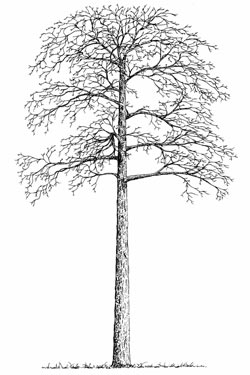1
The CASCADE (European Union Fifth Framework) research programme – Securing gene conservation, adaptive and breeding potential of a model multipurpose tree species (Castanea sativa) in a changing environment. Within the CASCADE consortium of eleven different partner institutions in six countries, East Malling Research (formerly HRI), Kent, used molecular markers (microsatellites) to assess genetic diversity and gene flow in sweet chestnut populations across Europe (Spain, Italy, France, Greece and the UK). Six UK coppice populations were also assessed and screened for resistance to Ink disease. Further details can be obtained from Karen Russell, the Group’s secretary.
2
Factors determining shake in sweet chestnut. A project at Imperial College, Wye campus, has investigated shake incidence at five contrasting sites in Kent. Site type, wood anatomy, phenology and meteorological history were examined, with clonal material collected from felled trees for physiological testing with funding provided by Woodland Heritage. The first article was published in Forestry in 2005 (volume 78, 175-186).
3
A joint Timber Trade, Forestry Commission and South East England Local Authorities initiative commissioned research project at the Building Research Establishment (BRE) to develop grading and structural standards for the use of chestnut for construction. This resulted in a British Standard for chestnut timber being established: BS 5756:1997Specification for visual strength grading of hardwood. The mechanical data will be published as a revision to BS 5268: 1996 Part 2, Structural use of timber.
4
The results of the European COST G4 action ‘Multidisciplinary Chestnut Research’ in which the UK participated are published in Forest Snow and Landscape Research, 2001, Volume 76, issue 3: 327 – 517: ‘Castanea sativa: pathology, genetic resources, ecology, and management’. U. Heiniger, Ed. See: http://www.wsl.ch/lm/publications/archiv/contentsV76_2-en.ehtml.
5
A review of The ecological impact of sweet chestnut coppice silviculture on former ancient, broadleaved woodland sites in south-east England by Imperial College was published as ‘English Nature Research Report 627’ (2004), obtainable from English Nature, Peterborough.
The search for the best chestnut trees
Do YOU know of any candidate ‘plus trees’ that should be represented in our clonal orchards? If so, please get in touch any Chestnut Group member (contact details below). We would be glad to hear from you. Typical ‘plus tree’ characteristics are:
- large stem diameter (more than 30cm diameter at breast height) and good vigour
- straight main stem with little sweep or bend
- cylindrical stem with low taper
- lack of low branching and forking
- absence of ring shake in adjacent trees (if known)
- absence of spiral bark patterns
Characteristic of an Ideal ‘Plus’ Tree of Chestnut
- Adapted to local climate and clearly superior as a timber tree to neighbouring trees
- Pest and disease free
- Good growth, healthy foliage
- Straight, circular stem with absence of spiral grain, fluting and buttressing
- Strong, well balanced crown with good apical dominance/persistent leader
- Uniform and lightly fissured bark with absence of long fissures
- Absence of epicormic shoots
- Fine branches
- Horizontal branches
- Desirable wood properties
